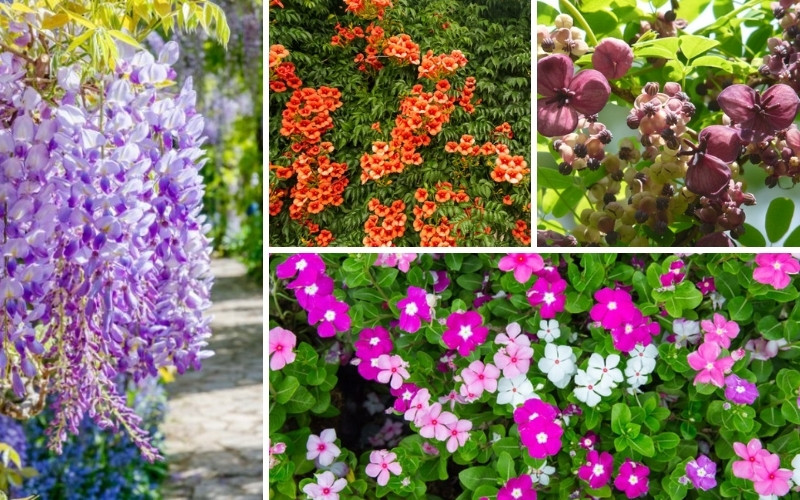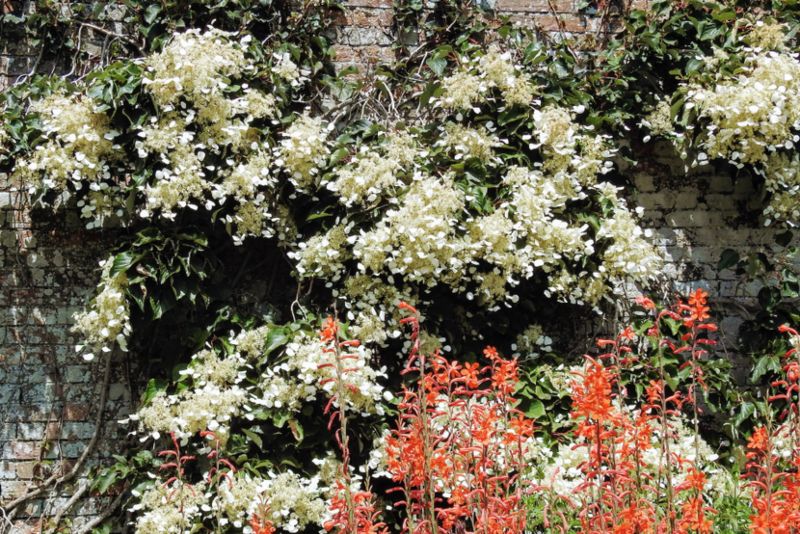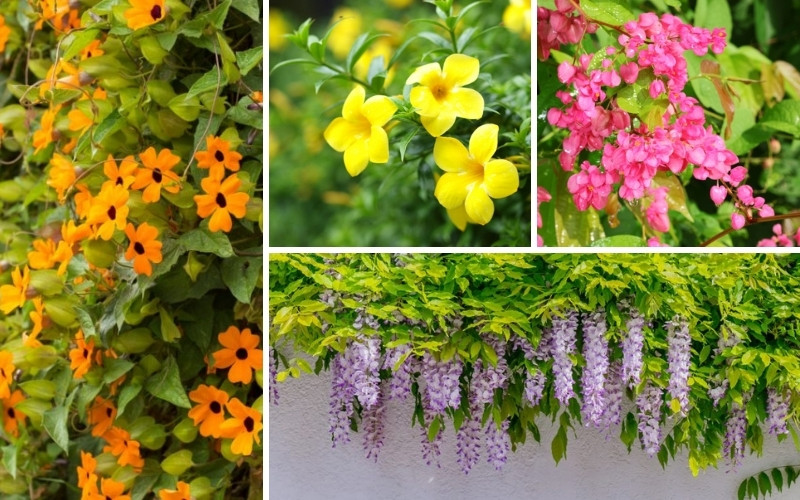
Vines are versatile, useful plants. You can easily use clematis or morning glories to cover a pergola or arbor with beautiful, bright blooms. Do you want more privacy? If so, choose fast-growing ivy, which can create an effective living screen. What’s even better is that hard-working vines offer cool, leafy shade when the temperatures rise.
Along with providing privacy, shade, and an appealing aesthetic, some vines will grow in shady conditions. This is great if you live somewhere that full sun isn’t always available. Keep reading to learn more about our top picks for the best vines for shade.
Getting the Right Shade Vines for Your Garden
If you are looking for vines that will thrive in the shade, you have several options to choose from. Each of these will grow well in the shade and provide you with a beautiful aesthetic for your garden.
You can even combine several of the options to create a unique look in your garden that you will love to show off. Being informed is half the battle, so choose from these to create an amazing shade garden.
1. Sweet Autumn Clematis

Sweet autumn clematis looks great, produces beautiful white, purple, and blue flowers, and grows well in the shade.
While it does need some support to climb, such as a trellis or wall, you can count on this vine to thrive once you plant it and water it well. In fact, the fast-growing vine is so popular that it is one of the most bought options today.
2. Boston Ivy

One of the first things to know about Boston Ivy is that it isn’t grown for the flowers. Instead, it’s the foliage of this favorite vine that has helped it earn a spot on this list.
You may not realize that “Ivy League” colleges were given this nickname because some of the external walls of the older buildings on campus are covered in – you guessed it – Boston Ivy.
The leaves of Boston Ivy turn a beautiful red in fall and stay a deep, glossy green in summer. This ivy can grow in a sunny and shady area but requires loamy soil.
3. Japanese Climbing Hydrangea

Japanese climbing hydrangea can take a while to start growing. However, you are bound to love the lacy eight-inch and 10-inch flowers it produces once it does.
The most common variety of this vine is called “Moonlight,” which produces white flowers. However, there is also a pink-colored version, which is called “Roseum” if you prefer.
For best results, plant this vine in part to full shade. At full maturity, it can reach 30 to 40 feet.
4. Chinese Wisteria

Wisteria is considered the “queen” of all flowering vines. The Chinese variety can easily grow in partial shade conditions or full sun.
The vine is best known for the fragrant, beautiful blooms, and they have been captured in all types of photos and videos through the years.
Even though the vine appreciates bright light, it will also grow in the shade. In fact, you can find it growing under tree canopies in nature.
A fun fact you may not know about Chinese wisteria is that it will always climb in a winding clockwise direction. Japanese wisteria climbs the other direction. Be sure to keep this in mind when selecting the best support for it.
5. Trumpet Vine

Also called foxglove and cow fine, this is another option that flowers. It creates red-orange, trumpet-shaped flowers when planted in the shade.
It is pretty easy to grow these vines, but some people consider them invasive, so it is necessary to prune them regularly. With regular pruning and care, you can keep this vine controlled.
6. Virginia Creeper

While Virginia creeper is a great option for shady areas, it is not as vigorous of a grower as some of the other options on the list. Also, it won’t thrive in smaller areas.
Even though there are some requirements, this vine is like Boston ivy because of the beautiful fall foliage. However, if you grow this vine in the shade, the colors may not be as vibrant as they would in full sun.
7. Variegated Kiwi Vine

The kiwi vine grows small white flowers during spring, but that’s not why most people choose to grow it. When planted in partial shade, it grows leaves that are a beautiful green, white, and pink combination.
You can purchase male or female versions of the vine, and both are required if you want to grow fruit.
Try choosing a male plant to get the best colors because it usually has more variegation than the females on the leaves.
8. Chocolate Vine

When it comes to nature’s wonders, the chocolate vine is definitely on the list. You can plant this vine in full shade, partial shade, or full sun and get a great-looking plant in no time.
The leaves are light green and look like clover, and it grows dark purple flowers that hang down, featuring three petals on each.
The flowers grow in small and fragrant clusters, and when they open, you will have hundreds of pink buds.
9. Periwinkle

While periwinkle may be invasive in some situations, it is easier to control in your landscape. Also, it produces the pretty blue-violet flowers that you have likely seen in nature.
This is a drought-tolerant option if you want a plant to put under trees, especially in more challenging environments.
While this is technically a vine, it doesn’t climb. Just keep that in mind when deciding whether it is right for you.
10. Variegated Magnolia Vine

If you live in a warmer zone, this is a great shade vine to try. It is deer resistant, too, and produces yellow or white flowers in the spring.
While the flowers are nice to look at, most people grow them for the red berries produced in fall and the variegated leaves that will stand out in your shade garden.
Like the kiwi vine, though, you need a female and male plant if you want fruit.













